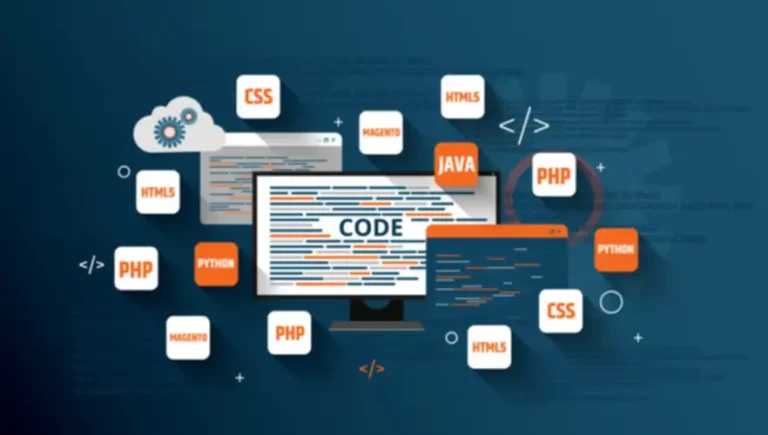You can see in the code block above that we didn’t need to cross in column names. Pandas knows to use the dictionary keys to be able to parse out column headers. This is as a end result of it’s a much more common knowledge construction you’ll encounter in your day-to-day work. Now, let’s dive into how we can pandas development create a Pandas DataFrame from scratch. As with the method head(), you’ll have the ability to cross an integer to outline the number of rows, and the default quantity is 5. Figure 5 shows the tactic returns the rows with indexes three and four.

Creating And Retrieving Data From A Pandas Dataframe
Pandas permits us to research huge information and make conclusions primarily based on statistical theories. The name “Pandas” has a reference to each “Panel Data”, and “Python Data Analysis” and was created by Wes McKinney in 2008. Slicing with .iloc follows the identical rules as slicing with lists, the item at the index on the end https://www.globalcloudteam.com/ isn’t included.

Exploratory Information Evaluation (eda)
To calculate a descriptive statistic for a DataFrame or Series object, use the tactic describe(). Each column of the DataFrame object is represented as a Series object. To get a specific column, insert the name of the column between sq. brackets after the name of the variable. The combination function returns a single collective worth for each group. The describe() method offers an summary of the fundamental statistics for all of the attributes in our knowledge. Note that the lists used should be the identical length; in any other case, an error will be thrown.
Creating A Dataframe From A Dictionary Of Sequence
Many times datasets could have verbose column names with symbols, upper and lowercase words, areas, and typos. To make deciding on data by column name easier we are able to spend slightly time cleansing up their names. Just like append(), the drop_duplicates() technique may also return a copy of your DataFrame, however this time with duplicates removed. Calling .form confirms we’re again to the a thousand rows of our original dataset. Data scientists and programmers acquainted with the R programming language for statistical computing know that DataFrames are a means of storing information in grids which would possibly be easily overviewed.

How Does Pandas Match Into The Data Science Toolkit?
When exploring knowledge, you’ll most likely encounter missing or null values, which are primarily placeholders for non-existent values. Most generally you’ll see Python’s None or NumPy’s np.nan, each of that are handled differently in some conditions. List (and dict) comprehensions turn out to be useful so much when working with pandas and information in general. We’re loading this dataset from a CSV and designating the movie titles to be our index.

Creating And Retrieving Data From A Pandas Series

The library makes it easy to work with tabular information, supplying you with a familiar interface that’s helpful for beginner programmers and seasoned professionals. Pandas handles database-like becoming a member of operations with nice flexibility. While, on the floor, the perform works fairly elegantly, there is lots of flexibility beneath the hood. For instance, you can complete many various merge sorts (such as inner, outer, left, and right) and merge on a single key or a quantity of keys. The purpose for applying this method is to break a big knowledge analysis drawback into manageable components.
- We move in its name to the DataFrame, which returns the results in the form of a pandas.Series.
- However, typically, we create it from dictionaries utilizing pandas.DataFrame( knowledge, index, columns, dtype, copy) constructor, where columns are for column labels.
- Pandas offers exceptional flexibility when working with duplicate information, together with having the power to determine, find, and remove duplicate fields.
- On the opposite hand, the correlation between votes and revenue_millions is zero.6.
- You can accomplish this from nearly wherever, whether utilizing a desktop, cellular system, or even the cloud.
- This Series is then assigned to a new column referred to as rating_category.
Pandas DataFrames are also regarded as a dictionary or assortment of series objects. The Pandas library has a number of features that may assist simplify your job. When working with giant data sets, you should use Pandas to kind via all that info and discover the data you’re in search of based on particular conditions. It additionally helps to enhance the general quality of your data, with the power to remove irrelevant values, empty sections of your information set, and proper lacking values.
Utilizing iloc And loc To Pick Data In Pandas
For huge DataFrames, as we now have, it’s impossible to check in opposition to every value individually. First, we connect to SQLite, create a desk, and insert values. We can add a model new row utilizing the append function to the DataFrame. Observe that the brand new rows will be added to the end of the original DataFrame.
We can pass a dictionary containing the column as the key and the mixture operate as the value. It simply splits data into groups categorized using some criteria and returns a dict of DataFrame objects. We have successfully changed empty values specified columns within the dictionary contained in the fillna() methodology. The any() method returns True, which means we have some duplicates in our DataFrame.

Before you do anything, I recommend reading the newest details about the completely different possibilities. Wes McKinney created Pandas in 2008 and launched it as an open-source project in 2010, thereby allowing anyone to contribute to its growth. McKinney wrote Pandas on prime of one other Python library called NumPy that gives performance such as n-dimensional arrays. After working in your knowledge, you may determine to convert any of the codecs to the other. Pandas has strategies to do these conversions just as easily as we learn the recordsdata. As you might have noticed, the pivot table code is easier and extra readable as in comparison with the groupby operation.
Let’s check out an example where we filter the DataFrame to level out only rows where Units are lower than four. This can be done utilizing the pandas .query() methodology, which lets you use plain-language type queries to filter your DataFrame. Note that we had been able to select the columns with out them needing to be beside one another!
